2014 Ford Fiesta ST Vs. Subaru BRZ

Unlike a lot of my other track test comparos, where I show up and do my best Stig imitation without having done any prior road testing in either car, in this case I got to spend a few days living with the Ford Fiesta ST on the street before we put it to the test against our favorite counterpart for anything with go-fast intentions for under $30,000: the Subaru BRZ.
Both the Subie and its sibling Scion FR-S are spectacularly well balanced around a race track, so much so that its 200 hp, 2.0-liter Boxer engine always leaves us wanting more.
In the Fiesta ST, though, it’s quite the opposite. What an engine! Or at least that was my initial impression while giving it a healthy dose of the right foot on my favorite highway on-ramps and backcountry roads. The sensation of acceleration and outright pace the Fiesta ST delivers is really quite shocking, especially given its subcompact econobox underpinnings.
With 202 lb-ft of torque available at 4,200 rpm, there’s a bit of a wait for the turbocharger to spool up, but then it comes on so strong it’ll tear the steering wheel out of your hands if you’re not careful (Ford hasn’t dialed out any of the torque steer, intentionally giving the Fiesta ST more of a raw and untamed feel). Keep it in the 3,000 to 5,000 RPM range where this little 1.6-liter mill really likes to play and you can dispatch slower moving traffic with a kind of hyperactive efficiency that turns commuting into a real life version of Mario Kart.
Ok, so I didn’t drop any banana peels out the window, but you get the idea. The Fiesta ST is seriously fast and fun on the street, almost comically so given its angry jellybean paint job (Molten Orange!) and squished hatchback proportions. Combined with a tightly geared and slick-shifting six-speed transmission, a racecar-firm suspension, sticky Bridgestone summer tires, and aggressively bolstered Recaro front seats and the feeling I was left with was that Ford designed this car for the most immature and antisocial of speed junkies, a demographic I proudly count myself among.
My street driving experience in the ST left me convinced it was going to spank the unsuspecting Subaru around our test track, especially given the recent rain and the slippery surface in a few corners. But then again, it would be foolhardy to count the BRZ out given how closely matched these two are on power-to-weight ratio (2,720 lbs and 197 hp for the ST and 2,760 lbs and 200 hp for the BRZ).
Street Hoonigan On The Track
Get the Flash Player to see this player.
Since I’ve done a few hundred laps around our test track in BRZs and FR-Ss, I couldn’t wait to give the Fiesta a proper shakedown. As much fun as it is on the street, you really can’t explore the full capabilities of a car as hardcore as the ST on public roads, so I was genuinely curious to see how it would react to the type of thrashing you can only dish out on a closed circuit.
In the corners, the Fiesta delivered exactly what I’d expected and more. Lightning quick and razor-sharp turn-in and an immediate willingness to rotate despite its front-wheel drive configuration certainly reminded me of its big brother, the Focus ST, but the Fiesta felt even freer to rotate and more responsive to rapid changes in direction. Both mimic more sophisticated torque-vectoring systems by applying braking to the front and rear wheels as needed to combat understeer and induce some controlled oversteer, but there’s no question the Fiesta is tuned more aggressively than its bigger and softer sibling.
The Fiesta ST’s more hardcore suspension tuning – meaning higher spring rates and bar rates along with racier shock damping – is at the heart of its Ken Block-ish character. As a result, there’s virtually no sensation of body roll, and its short wheelbase gives it a “pointiness” that allows you to flick it through the esses in a wonderful little pendulum of rear tire slip angle and a touch of opposite lock. It’s as fast throughout the esses at our test track as any front-wheel drive machine we’ve ever tested and more fun to chuck into a corner than a lot of rear-drivers.
Opposites Combat
Contrary to my impression on the street, out on the race track the Fiesta really didn’t feel much faster down the straights than the BRZ. In fact, top speed at the end of the front straight was nearly identical (96 MPH for the BRZ and 97 MPH for the ST), despite these two machines delivering their power to the ground at opposite ends of their chassis and different points in their rev ranges. The BRZ feels a lot livelier in the upper reaches of its 7,400-rpm range, while the Fiesta’s 51 lb-ft torque advantage paid big dividends while squirting out of corners in the 3,000 to 5,000 rpm sweet spot, but power flattens off from there to its 6,300 fuel cut.
Compare Specs
| Vehicle | 2014 Ford Fiesta ST | Advantage | 2014 Subaru BRZ |
|---|---|---|---|
| Engine | 1.6-liter turbo four-cylinder | - | 2.0-liter Boxer four-cylinder |
| Horsepower | 197 hp | BRZ | 200 hp |
| Torque | 202 lb-ft | Fiesta ST | 151 lb-ft |
| Curb weight | 2,720 lbs | Fiesta ST | 2,760 lbs |
| Lap time | 1:28.082 | BRZ | 1:27.791 |
| Weight distribution | 61/39 | BRZ | 53/47 |
| Top speed at track | 97 mph | Fiesta ST | 96 mph |
The ST’s mountain of mid-range torque did allow it to pull a bit of a gap at the end of the “back” straight between T1 and T2, between T5 and T6, and on the “middle” straights between T6 and T7. But truth be told, a big part of the Fiesta’s higher Vmax down these straights stems from the fact that I could brake later and harder in the ST than in the BRZ, partly because of its more aggressive and fade-resistant brakes but also because of its significantly stickier tires (140 tread wear Bridgestone RE050A vs. the BRZ’s 240 tread wear Michelin Primacy HP).
And thanks to its sticky tires and ultra-aggressive suspension tuning, the Fiesta also held its own in the corners, matching the BRZ’s peak g-force and corner entry speeds through the first six corners. But what peak g’s and corner entry speeds don’t tell you is how much earlier I could transition back to full throttle in the BRZ, thanks to its unsurpassed handling balance, remarkably low center of gravity, and extremely predictable Torsen limited slip differential. No newfangled torque vectoring here, just world-class chassis tuning and a traction control ‘off’ button that actually works.
As a result, by mid-corner the BRZ was consistently clawing back precious tenths on the stopwatch, especially in the reducing radius Turn 3 and in the two dampest corners, the second half of the esses (T5) and the tight 90-degree lefthander leading onto the middle straight (T6). The BRZ’s advantage in the slippery corners did come as a bit of a surprise because a front-drive car normally has a grip advantage on damp tarmac (since the weight of the engine and drivetrain is over the drive wheels). But instead of finding grip, the Fiesta just plowed offline, while the BRZ would go into a balanced drift that scrubbed off less speed.
This really drove home for me how well the BRZ uses all four of its contact patches, but I do have to come back to the difference in tire compound and tread pattern again, since the Subaru’s less aggressive Michelin’s clearly worked better in the damp sections of the track.
A Surprise Ending
If you take a close look at the in-car data through Turn 7 and into Turn 8, you’ll notice that the Fiesta had built up over a half second lead thanks to its torquey little engine and big braking advantage. But then two of the trickiest corners on the track changed everything.
Turn 9 is an excruciating slow 180-degree right-hander that severely punishes too much corner entry speed and even the slightest of understeer bias. It’s a corner that’s tailor-made for a perfectly balanced rear-drive sports coupe like the BRZ, which allows the driver to use a little throttle-on oversteer to get the chassis turned early in this patience-tester of a turn.
Meanwhile, the ST showed some low-speed push here, an almost unavoidable byproduct of its front-engine, front-wheel drive design. As a result, its lead had completely evaporated as the two exited Turn 9 and barreled through the quick dogleg left-hander leading into the final corner on the track.
Also a 180-degree right-hander, Turn 11 is faster and wider than Turn 9, and it’s also the most important corner on the track since it leads onto the longest straight. Carrying as much speed as possible out of this corner is therefore crucial, and once again the Subaru’s ability to get turned early meant I could get back to full throttle sooner and effectively lengthen the straight in the process. The Fiesta ST, by contrast, pushed pass the apex and required some drop-throttle technique to get it turned before I could get back on the gas. This really hurt its corner exit speed and cost the plucky little Ford the race.
The Verdict
In the end, the BRZ crossed the start/finish line 3/10ths of a second sooner than the Fiesta, snatching victory from the jaws of defeat thanks to its superior low-to-medium speed handling balance. In the shorter and less severe corners the Fiesta was a surprisingly good match for the Subaru, but in the longer and more severe corners, its less favorable weight distribution (61 percent up front, compared to the BRZ at 53 percent) and dependence on the front tires for traction and steering exposed its underlying subcompact econo-car compromises, especially when compared to the “built from the ground up to kill it in the corners” BRZ.
And yet somehow it’s the Fiesta ST that stole my heart, that big surge of turbocharged mid-range torque making it an utter blast to drive around town, and as a weekend track toy or autocross machine it’s as much fun as a front-drive car has ever been. And I say this as a former Integra Type R owner. It really is an intriguing alternative for anyone who needs the practicality and usability of a five-door hatchback but still wants a fully engaging driving experience. It’s a car you just can’t help but drive with a mischievous grin on your face, its riotous character urging you to drive it flat-out all the time.
On the downside, the ST’s ride quality is punishing on the street, and it certainly doesn’t offer the same low-slung sports coupe seating position or swoopy profile as the BRZ. And once you option it out with the Recaro seats, power moonroof, Rado Gray premium painted wheels, and navigation system like our test mule, it’s $22,225 starting price creeps up to $26,185, just $2,200 less than the top-of-the-line BRZ Limited model. Oh, and the faster, more spacious and more luxurious Focus ST starts at $24,450. Just saying…
In any case, this is an apples-and-oranges comparison in many ways. The Fiesta ST and Subaru BRZ having completely different personalities and driving dynamics. And yet both are an utter hoot to drive around the race track and achieve remarkably similar lap times. As a driving purist and occasional race car driver, I’ll take the BRZ because of the way its rear-wheel drive chassis frees you to drive it at slip angles a front-wheel drive machine simply cannot achieve, but the Fiesta ST’s mid-range torque and aggressive character do make it a hugely enjoyable street machine.
2014 Ford Fiesta ST, 2014 Subaru BRZ
LOVE IT
- Turbocharged engine delivers tons of mid-range power
- Optional Recaro seats offer plenty of support
- Immediate turn-in response and quick steering rack
- Still the handling champion of the sub-$30k world
- Incredibly precise and communicative steering
- True sports car seating position and controls
LEAVE IT
- Ultra firm suspension tuning make it a rough ride on city streets
- High seating position has an econo-car feel
- Cramped interior ill-suited to plus-sized models and middle-age racing drivers
- Brake fade starts to kill the fun after a few laps
- Needs a sexy exhaust note to match its sexy sheet metal
- Chassis is crying out for more power

Some say he's closely related to Bigfoot and that he's a former Canadian Touring Car Champion. All we know is he's the AutoGuide Stig! A thesis defense away from being your intellectual superior he's a professor of vehicle handling dynamics. The part-time touring car and time attack racer is faster (much faster) than your average auto journalist.
More by Dave Pratte


















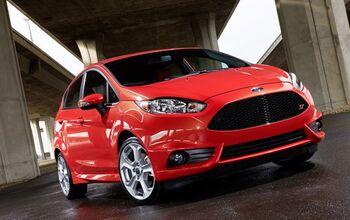


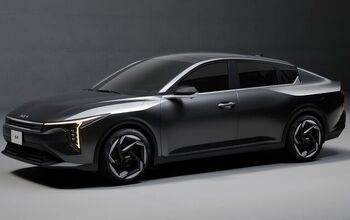

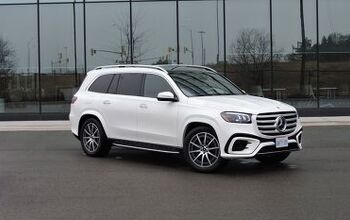
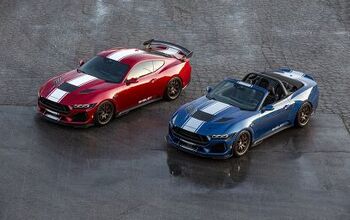

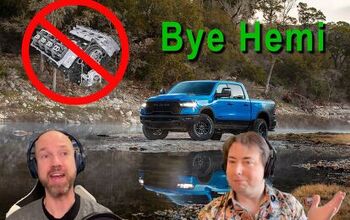


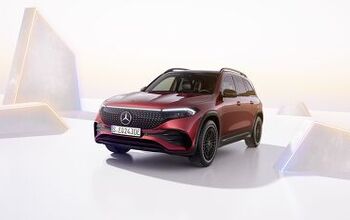

Comments
Join the conversation